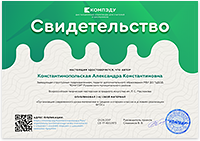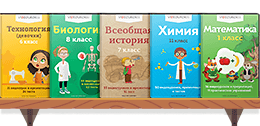«Путешествие в Лондон»
Учитель английского языка МОУ «СОШ №1 им.С.И.Гусева»
Федотова Татьяна Викторовна
УМК «Enjoy English» для 5 класса
Авторы учебника: Биболетова М.З. и др.
Класс: 5
Тип урока: урок актуализации знаний и умений
Тема: «Путешествие в Лондон»
Цели урока:
Образовательные: актуализация и закрепление знаний, умений и навыков по теме «Достопримечательности Лондона»; обучение использованию различных видов деятельности (чтение, письмо, монологическая речь, аудирование) в соответствии с поставленной коммуникативной задачей.
Развивающие: развивать произносительные навыки, навыки монологической речи, навыки аудирования, чтения с полным пониманием, письма; развивать языковую догадку и воображения, творческое мышление, память; развивать навыки работы с опорами, умение выделять основную информацию из прослушанного и прочитанного.
Воспитательные: воспитывать уважение к культуре страны изучаемого языка; повышать интерес к изучению английского языка, воспитывать культуру языкового общения, уважительного отношения друг к другу, умение внимательно слушать собеседника, работать в группах.
В процессе обучения формируются следующие блоки УУД:
Личностные УУД:
Формирование мотивации изучения английского языка и стремление к совершенствованию.
Стремление к совершенствованию собственной речевой культуры.
Формирование ответственного отношения к учению.
Развитие таких качеств, как целеустремленность, инициативность, трудолюбие, дисциплинированность.
Регулятивные УУД:
Формирование волевой саморегуляции, умения настроить себя на работу, контролировать свою готовность к уроку.
Формирование умения самостоятельно контролировать свое время и управлять им.
Формирование умения самостоятельной работы.
Умение корректировать свои действия в процессе коммуникативной деятельности на английском языке.
Познавательные УУД:
Умение структурировать свои знания по определенной теме, ориентироваться в системе своих знаний.
Построение логических рассуждений, включающих установление причинно-следственных связей.
Освоение ознакомительного, изучающего и поискового чтения.
Коммуникативные УУД:
Формулирование собственного мнения и позиции.
Получение возможности определять проблему, аргументировать ее актуальность, делать свои выводы.
Использование языковых средств для отображения своих чувств, мыслей, мотивов и потребностей.
Владеть основными правилами орфографии, написанием наиболее употребительных слов.
Предметные умения:
Заполнять анкету.
Соотносить значения слов с их переводом.
Находить необходимую информацию в соответствии с коммуникативной задачей.
Строить диалогическое высказывание.
Систематизировать имеющиеся знания в соответствии с коммуникативной задачей.
Языковой материал: слова по теме «Достопримечательности Лондона», названия достопримечательностей.
Оборудование: мультимедиа, презентация, карточки, раздаточный материал, макет автобусов.
Ход урока.
| Организационно - мотивационный этап
| Good morning, children! My name is …..and …. We will be your teachers today. We think, you are in good mood . Lets smile to each other and begin to work.
|
| Постановка учебной задачи
| Now look at the screen (слайд 2 ). Please, guess what city is it? (предположения учащихся). Yes, that is London. And what is the theme of our lesson today? (sights of London) And today we invite you to travel to London. You ll be tourists today. We’ll travel on the special bus for tourists, its name is double-decker. But what should we repeat before our travelling? (формулирование целей)(слайд 3) Do you know smth about London (It’s a capital of GB)? But where is it situated? Do you know the country? (слайд 4) It is situated in this country (слайд 5).
|
| Активизация орфографических навыков
| You are tourists today and all tourists have special cards, where they write their names, surnames, age and so on. Take these cards on your desks and write information about you! (заполняют карты) Самопроверка со слайдом (слайд 6)
|
| Фонетическая зарядка
| And now we begin our travelling! We see sights of London. Lets name them (Слайды 7-13 ) (повторение названий достопримечательностей за учителем) Big Ben Westminster Abbey [ westmnistə æbi] The Houses of Parliament [ ðə hauziz əv pa:rləmənt ] The tower of London [ ðə tauə əv lаndən ] Tower Bridge [ tauə bridз ] Buckingham Palace [ bаkiŋəm pæləs ] Trafalgar Square [ trəfælgər skweə] (слайд 13)
|
| Закрепление и обобщение лексического материала по теме «Достопримечательности Лондона»
| Do you know their names in Russian?( называют их по-русски) активизация навыков поискового чтения (работа в группах, чтение текста) We continue our travelling! Work in groups. Read the text and answer the questions. заполнение пропусков в тексте предложенными словами) Your task is to put missing name of the sight into blankets: (слайд 14) (Демонстрация выполненной работы, обсуждение, выявление ошибок)
|
| Подведение итогов
| Well, our travelling comes to its end! Lets remember the beginning of our lesson. What had we to remember and to repeat while travelling? (все ли у нас получилось из того, что мы хотели сделать на этом уроке) Have we done it?
|
| Рефлексия | I like \ don’t like our lesson. It was easy \ difficult to learn the sights of London. read text.
My mood is good \ bad.
|
Big Ben
The famous clock Big Ben stands near the Houses of Parliament. Big Ben is a big bell. The clock has four faces and five big bells. The biggest bell is known as Big Ben. The bell is named after(назван в честь) Sir Benjamin Hall. He was a tall man, whose nickname was Big Ben. So people know the clock as Big Ben. You hear it every hour. The bell weighs 13720 kilograms. It has a deep tone and you can hear it on the radio: “This is the BBC. The time is six o’clock.” And then you hear the deep boom of Big Ben of six times.
Big Ben looks most attractively at night when the clock faces are illuminated. You even know when parliament is in session, because a light shines above the clock face.
Questions:
Where does Big Ben stand?
Who was the bell named after?
Where can you hear Big Ben?
Buckingham Palace
Buckingham Palace is the Queen’s official residence and is used to receive (принимать) and entertain (развлекать) guests on state, ceremonial and official occasions (событие, повод) for the Royal Family. The Queen has four palaces in Britain.
The Buckingham Palace is located (расположен) between the Green Park, Hide Park and St. James’s Park. During August and September you can go inside Buckingham Palace. The palace is very big. You can see 19 of the rooms, ballroom and gardens, the gallery with the Royal family’s greatest treasures(сокровища) including paintings and the finest French and English furniture. If the Queen’s flag is flying outside the palace, it means that the Queen is at home.
Questions:
What is the Queen’s official residence?
Where is Buckingham Palace located?
When can guests go inside Buckingham Palace?
Downing Street
10 Downing Street is the residence and office of the Prime Minister of the United Kingdom and the headquarters of Her Majesty’s Government. Downing Street is located in Whitehall in central London, a few minutes’ walk from the Houses of Parliament and a little farther from Buckingham Palace. It is actually the official residence of the first Lord of the Treasury, but in modern times this post has always been held simultaneously with the office of Prime Minister.
Questions:
Where is Downing Street located?
Is 10 Downing Street the office of Prime Minister?
Is 10 Downing Street far from the Houses of Parliament?
What is situated next to 10 Downing Street?
Trafalgar Square
Trafalgar Square is the geographical centre of London. It was so named to commemorate Admiral Nelson’s victory at the Battle of Trafalgar. In the middle of the square there is a very famous monument Nelson’s Column with the statue of Lord Horatio Nelson on the top. The Column is over 170 feet high. Its pedestal is decorated with bas-reliefs(барельефы) of famous naval battles. At the base (в основании) of Nelson’s Column are four great lions.
Trafalgar Square has become famous as a point for all kinds of demonstrations, marches and political meetings.
Each year in December, the people of Norway send a gift to Britain. It is a big Christmas tree which stands in Trafalgar Square.
Questions:
Why was Trafalgar Square so named?
Where is Column of Nelson situated?
What can you tell about Christmas tree in Trafalgar Square?
London Eye
The London Eye is a giant observation wheel situated on the bank of the river Thames. It is 135 meters high. As the wheel turn it stops to allow tourists to see fantastic views over the city. It takes half an hour for the London Eye to complete one rotation.
Since opening in March 2000 the London Eye has become a symbol of modern Britain. The London Eye is visited by over 3,5 million people a year.
The wheel carries 32 sealed and air-conditioned egg-shaped passenger capsules. Each 10 tones capsule holds 25 people, who are free to walk around inside the capsule, though seating is provided.
Questions:
Where is the London Eye situated?
Since what time has the London Eye become a symbol of modern Britain?
How many tourists visit the London Eye a year?
How many passengers does the wheel carry?
Tower Bridge
Tower Bridge is the most famous bridge over the River Thames. It is close to the Tower of London, which gives it its name. Sir John Wolfe Barry designed it.
The bridge consists of two towers which are tied together. The bridge was officially opened on 30 June 1894 by the Prince of Wales (the future King Edward VII), and his wife.
The bridge is 244 meters in length with two towers each 65 meters high.
Thousands of tourists visit Tower Bridge every year.
Questions:
What is the most famous bridge in London?
Why does it give its name?
When was Tower Bridge officially opened?
Who was Tower Bridge officially opened by?
Who designed Tower Bridge?
Tower of London. The White Tower.
The Tower of London is one of the most popular of London’s historical sites. Now it is a museum. It comprises 20 towers. The oldest is the White Tower, dates back to the 11th century and the time of William the Conqueror. Nowadays a lot of tourists visit the Tower of London, because of the Tower’s evil reputation as a prison. The Tower has got Beefeaters, ravens, the Crown Jewels. The royal Crown has got three hundred jewels on it and the celebrated Indian diamond.
The ravens, huge black birds, are an official part of the Tower. Legend states that it the ravens were to leave the Tower the Crown will fall and Britain with it. Under the special care of the Raven Master, the ravens eat raw meat every day. And there is no danger of them flying away, because their wings are clipped(подрезаны крылья).
Questions:
What is the most popular historical sites in London?
How many towers does the Tower of London comprise?
When was the Tower of London founded?
What is the Tower of London famous for?
The Houses of Parliament.
The Houses of Parliament is the seat of Britain’s two parliamentary houses, the House of Lords and the House of Commons(Палата Лордов и палата Общин).
The buildings are situated on a central site near the river Thames.
In 1265 a parliament was created with two houses: the Lords and the Commons. The House of Lords met at the Palace of Westminster while the House of Commons did not have a permanent location. After King Henry VIII moved his court to Whitehall Palace in 1530, the House of Lords continued to meet in Westminster. In 1547, the House of Commons also moved here, confirming Westminster as the central seat of government, a position it still holds today.
The tower opposite Big Ben is the Victoria Tower, built in 1860. During the parliamentary year the Union flag is hoisted on top of the 98m tall tower.
The Queen, who is the Head of State, opens and closes Parliament. All new laws are discussed by MPs in the Commons, then debated in the Lords, and finally signed by the Queen. All three are part of Parliament in Britain.
Questions:
Where is the seat of Britain’s two parliamentary houses?
What is opposite Big Ben?
When was the Victoria Tower built?
Who is the Head of State?
Westminster Bridge
Westminster Bridge is a road and foot traffic bridge over the River Thames. For over 500 years, the nearest bridge to London Bridge was at Kingston. Proposals for a bridge at Westminster had been made as early as 1664. The current bridge was designed by Thomas Page and opened in 1862. The bridge is painted green, the same colour as the leather seats in the House of Commons which is on the side of the Palace of Westminster nearest the bridge. This is in contrast to Lambeth Bridge which is red, the same colour as the seats in the House of Lords and is on the opposite side of the Houses of Parliament.
It links the Palace of Westminster on the west side of the river with Country Hall and the London Eye on the east and was the finishing point during the early years of the London Marathon.
Questions:
What colour is the bridge painted?
What does Westminster Bridge link?
The Globe Theatre
The Globe Theatre has long been associated with Williams Shakespeare. The original Globe Theatre, built by an acting company to which William Shakespeare belonged, opened in 1559.
Unfortunately, the original Globe Theatre burnt to the ground during a performance of Shakespeare’s Henry VIII in 1613. The new Globe Theatre opened in 1997. It is located on Bankside, about 183 metres from the original site. It was the first building with a thatched roof allowed to be built in London since the great Fire of 1666.
Similar to the original, the stage of the new Globe Theatre extends into a large circular yard, which is surrounded by three tiers of very steep seating. The most expensive seats are covered. All others are exposed, which is why plays are held here only during the summer months. Additional standing room is available at a very low cost for those who don’t mind remaining erect during the production.
Questions:
With what name is the Globe Theatre associated?
Where is the Globe Theatre located?
Why are plays held only during the summer months?
Westminster Abbey
Westminster Abbey is a Gothic monastery church in London that is the traditional place of coronation(коронации) and burial(захоронения) for English monarchs. Westminster Abbey is famous for its architecture, for its historic associations. In Westminster Abbey many of the greatest English writers are buried: Chaucer, Ch. Dickens, Tennyson, Thomas Hardy and Rudyard Kipling. Here, too, are memorials to Shakespeare, Burns, Byron, Walter Scott, Thackeray and to the great American poet Longfellow. Westminster Abbey is a place of worship owned by the royal family.
Questions:
Is Westminster Abbey a church or a palace?
What is Westminster Abbey famous for?
Who is buried in Westminster Abbey?
St. Mary Axe
30 St. Mary Axe Building is a skyscraper in London’s main financial district, the City of London.
Originally known as the Swiss Re Building, it was later renamed to its street address 30 St. Mary Axe after Swiss Re sold the building in 2007. Even before its construction was complete Londoners nicknamed the building the “Gherkin” for its distinctive shape and it is still known by that name.
The skyscraper was built in 2004 after a modern glass and steel design by the architectural firm of Foster and Partners. With 41 floors, the tower is 180 metres (591 ft) tall. The cigar-shaped structure has a steel frame with circular floor plans and a glass façade with diamond-shaped panels.
The top of the tower, where visitors find an open hall covered by a glass conical dome is spectacular. From here you have great views over the city. The building is not open to the public. Its unique and efficient design has won the Gherkin many awards.
Questions:
What is the nickname of the building?
Who nicknamed the St. Mary Axe Building the “Gherkin” and why?
St. Mary Axe Building is a skyscraper, isn’t it?
What is at the top of the building?
St. Paul’s Cathedral
The city’s greatest monument, St. Paul’s Cathedral was built by Christopher Wren between 1675 and 1710. Unfortunately Christopher Wren died before the completion. He is buried there.
The Cathedral is one of Europe’s largest cathedrals and it is second in size only to St. Peter’s in Rome. The famous dome reaches a height of 111 meter (366 ft) and weights about 66,000 tons. On top of the dome is a large lantern with a weight of 850 tons.
560 steps lead visitors along three galleries all the way to the top of the dome. The first gallery, the Whispering Gallery, just inside the dome, is renowned for its acoustics. The second gallery, the Stone Gallery, is situated at a height of 53 meter (174ft) on the outside of the dome, right on top of the colonnade. On top of the dome, at a height of 85 meter (279 ft), is the narrow Golden Gallery, encircling the lantern’s base. Here you have a magnificent view over the City.
The church was the site of a number of important historic events such as the funeral of Admiral Nelson in 1806 and the funeral of Winston Churchill in 1965. Prince Charles and Lady Diana Spencer married here in 1981.
Questions:
Who built St. Paul’s Cathedral?
When was it built?
What historic events were in St. Paul’s Cathedral?





